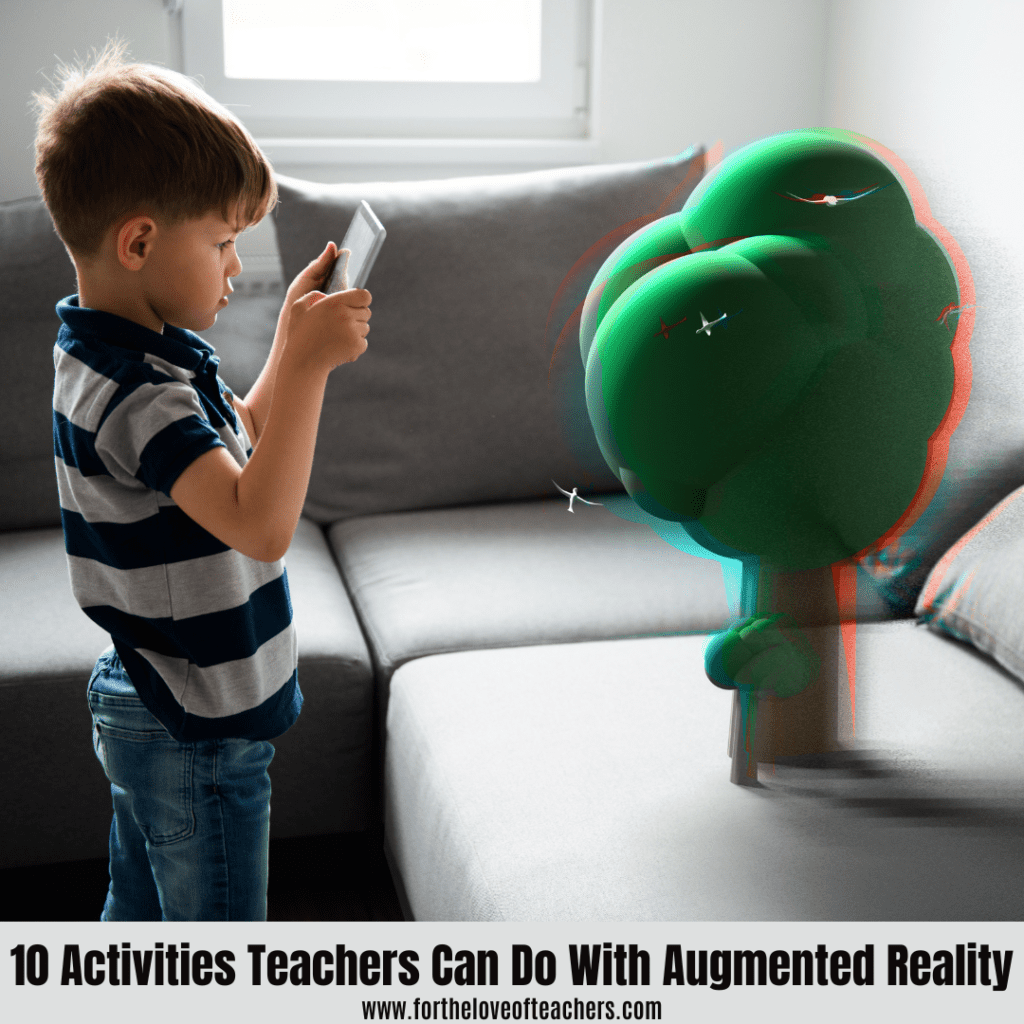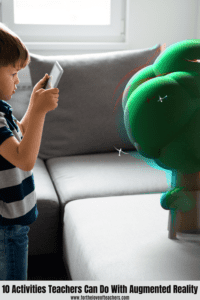Augmented reality (AR) is one of the hottest trends in education right now and for a good reason! AR is a type of technology that allows digital images and information to be displayed in the physical environment. With AR, students learn and explore new concepts in a more immersive and interactive way.
If you’re a teacher who’s interested in using it in your classroom but not sure how, don’t worry! In this post, we’ve put together a list of 10 activities that you can do with augmented reality. Whether you’re teaching Math, Science, History, or English, you’ll discover that AR is a valuable tool for enhancing your students’ learning experience.
So if you’re ready to get started with AR in your classroom, read on!
10 Ways Teachers Can Use AR Inside the Classroom
1. Create virtual tours.
One of the many advantages of AR is that it has the potential to take students on virtual yours without ever having to leave the classroom. For example, you could use an AR app to take your students on a virtual field trip to the Great Wall of China, the Taj Mahal, or even the surface of Mars! You could also tour the inside of a human body, go back in time to ancient civilizations, or explore the inside of a volcano. The possibilities are endless!
2. Teach foreign languages.
AR can also be used to teach foreign languages in an immersive and exciting way. You can use AR to transport your students to a foreign country where they can practice their language skills in a real-world setting. Additionally, AR can be used to create virtual experiences that immerse students in the culture of a foreign country.
3. Bring historical figures to life.
Another amazing way to use AR is to bring historical figures to life. Using AR, you can have students meet and interact with figures like Julius Caesar, Abraham Lincoln, or even Marie Antoinette. This is a great way to bring history to life and help students better understand the people and events they are learning about.
4. Conduct virtual dissections.
Unlike traditional dissections, virtual dissections conducted through AR allow students to see inside the body without harming any animals. This is a great way for students to learn about human anatomy and physiology. Additionally, virtual dissections can be done over and over again until students fully understand the concepts.
5. Play educational games.
We all know that students love playing games, so why not use AR to have more fun and engaging learning? There are many educational AR games available that cover a wide range of topics, from Science and Math to History and Geography. These games are great for reviewing or introducing new concepts in a fun and interactive way. Additionally, many of these games can be played in groups, making them great for classroom activities.
6. Make math more fun.
Math can be a difficult subject for some students, but AR can make it more fun. Teachers can use AR to create interactive math games that make learning more engaging and exciting. Additionally, AR can be used to visualize mathematical concepts, which can help students better understand them.
7. Help students with special needs.
AR can also be used to help students with special needs learn in new ways. There are many apps and games that are specifically designed for children with Autism Spectrum Disorder, Down Syndrome, and other learning disabilities. These tools can help children with special needs develop new skills and reach their full potential.
8. Encourage physical activity.
With childhood obesity rates on the rise, it’s more important than ever to encourage physical activity in schools. AR can be used to create active games and activities that get students up and moving. These games are not only great for getting kids active, but they’re also great for promoting teamwork and cooperation.
9. Make connections across subjects.
One of the great things about AR is that it has the potential to connect different subjects together in interesting ways. For example, a lesson on fractions could incorporate an AR game that requires players to collect fractions of different objects in order to progress; or a lesson on photosynthesis could include an AR component that allows students to see how sunlight affects plant growth in real-time. This type of cross-curricular learning can help students make connections between subjects and see how they relate to one another.
10. Encourage students to be creative.
Lastly, AR is a great opportunity for students to be creative. There are many AR apps that allow users to create their own content, such as 3D models and digital paintings. This is a great way for students to express themselves and show off their creativity. Additionally, it can help students develop important 21st-century skills, such as problem-solving and critical thinking.
Compared to virtual reality, which creates a completely simulated environment, AR allows users to interact with the real world while also seeing digital content. This technology has a wide range of potential applications in education, from providing new ways to learn about the world around us to encouraging students to be more active and engaged in their learning. So if you’re looking for ways to use AR in your classroom, be sure to check out some of the ideas on this list. Who knows, you might just find your new favorite teaching tool!
Do you use Augmented Reality (AR) in your classroom? Share in the comments.
About the Author: Bash Sarmiento is a writer and an educator from Manila. He is currently finishing his Doctor of Education degree in Miriam College. Bash writes laconic pieces in the education, lifestyle, and health realms. His academic background and extensive experience in teaching, textbook evaluation, business management, and traveling are translated in his works.
Thanks for reading!
If you like it, then pin it!

Christine Weis is a passionate educator, classroom management coach, wife, and mom of two busy boys. She enjoys teaching, writing, and creating resources for teachers.







Leave a Reply